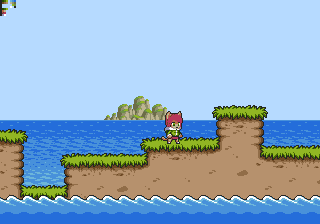Hello. I'm a new member here and a longtime sega-fan who also happens to be a pixel artist. I really enjoy is making mockups based on the specs of older systems. I've done quite a few based on NES and Master System. I have a a fair knowledge about their limitations and such, but I want to move up a level and try one for my absolute fave system; The Mega Drive (or Genensis if you prefer that). So I hope someone here can clear some things up for me or at least point me in the right direction.
From what I understand the MD can show 64 colours on screen at the same time, based on a 9-bit RGB palette. That part seems simple enough, but please let me know if I'm mistaken. Basically what I need to know is whether I have to divide these 64 colours into 4 palettes for sprites and tiles, or if I can use multiple palettes as long as I don't exceed the 64 colour limit.
Any help would be greatly appreciated!

From what I understand the MD can show 64 colours on screen at the same time, based on a 9-bit RGB palette. That part seems simple enough, but please let me know if I'm mistaken. Basically what I need to know is whether I have to divide these 64 colours into 4 palettes for sprites and tiles, or if I can use multiple palettes as long as I don't exceed the 64 colour limit.
Any help would be greatly appreciated!




